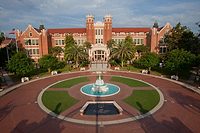Seek to Develop an ‘Empowering Partnership’


|
Over the past decade, I have had the opportunity to lead Stanley Convergent Security Solutions’ Software Solutions Group (SSG); a team of Microsoft, Oracle, Cisco and security product certified professional support engineers with an amazing level of expertise in security system design, installation and support. Out of the many integrated security system customers that we provided service to, perhaps none were as dynamic in continual event management and cutting-edge system linking as our higher education security partners.
With colleges and universities ranging in size from a few hundred to tens of thousands of students, faculty and contractors, it is immediately evident that one product does not fit all. Some schools have campuses in multiple cities, states or countries, while other schools operate in a single community. Additionally, some institutions of higher learning have a unified vision for streamlining school systems and processes while others wrestle with internal customer challenges and fiefdoms. All of them, however, have the trust of their student and faculty population in their hands and that makes security a paramount endeavor.
Looking back over the past decade, a few best practices come to mind that would fall under advisement to any higher education champion looking to better their respective school’s security preparedness and efficiency.
When it comes to technology, there is a difference between bleeding edge and cutting edge. There is also a difference between a sales representative demonstrating a single device out of a briefcase and an integrator that can introduce you to a satisfied customer utilizing the proposed technology and application. When evaluating a truly new technology or application, do not hesitate to limit implementation to a few rooms or areas on your campus to test the product to your satisfaction. Many manufacturers and integrators are perfectly willing to put a test unit in place on your campus to improve the application. Early technology adopters should have the infrastructure, resources and flexibility to implement and adjust new technology as needed without having a negative impact on school operations.
Do not forget that technological capability is not equal or constant. What one integrator can deliver from experience and expertise cannot be achieved by every other integrator. What may have been “no” last year because of unproven technology will be “yes” in the coming months after proven stable application. Do not hesitate to ask what technology can do for your campus. In fact, don’t hesitate to involve your IT group early in your security discussions. Automated data sharing has been available in IT realms for many years and yet it remains a fringe capability to most integrators. The right system and integrator combination can put a smile on the faces of both IT and operations departments.
It pays to develop a partnership with your security provider. Many universities benefit greatly from having the security integrator provide a full-time, embedded technician or project manager who acts as a liaison to the benefit of all parties. Higher education safety and security is a noble calling. Both the integrator and school are working together in an empowering partnership to ensure the safety of the campus population and bolster the standing of our proud institutions.
Looking for a reprint of this article?
From high-res PDFs to custom plaques, order your copy today!









